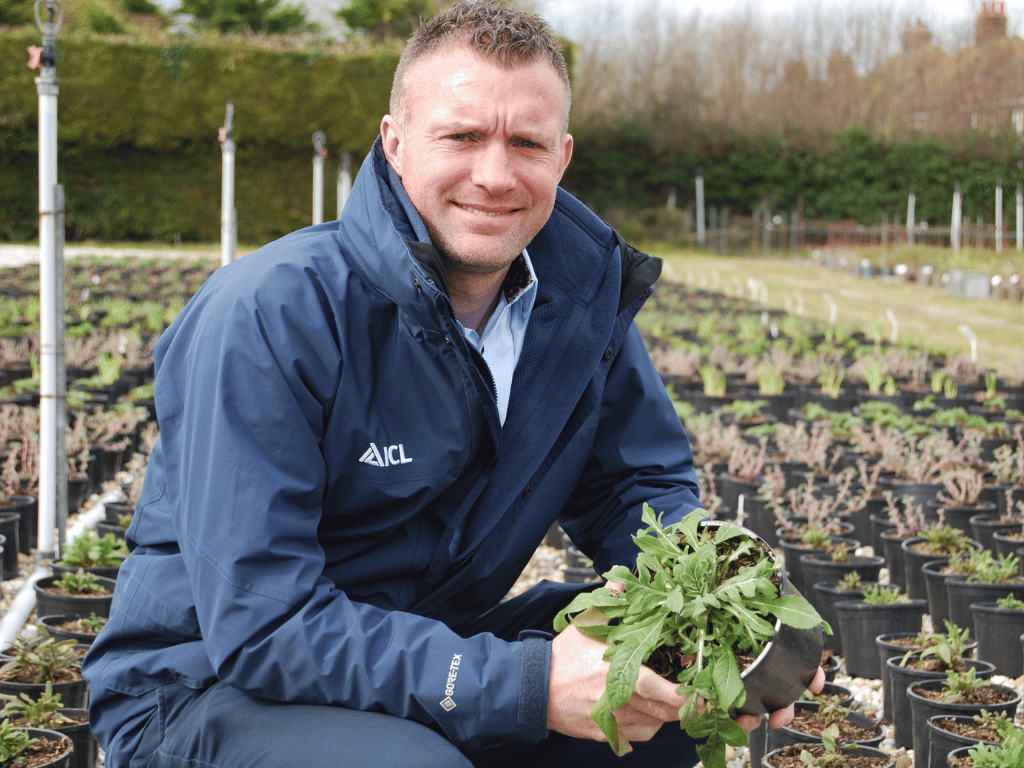Challenges of Growing Media storage and potting times
Being a grower has never been easy, and with shifting legislation around fertilisers, chemicals, waste, and changes in growing media trends, it’s only getting more complicated. Not so long ago, growing media was simple—just peat, lime, fertiliser, and a wetting agent. But today, it’s far more complex. Mixes now contain a blend of differing raw materials, nitrogen to balance wood-based products, additional Osmocote to offset leaching, and extra wetting agents to improve water retention.
If everything goes according to plan, these new growing media can perform just as well as traditional ones. However, with all these added components, there’s more room for error. Each ingredient can affect the media in different ways, and even small variations can cause problems down the line.
Peat, for instance, is almost inert, making it relatively easy to manage. In contrast, coir can bring with it sodium, chloride, and potassium—elements that increase the electrical conductivity (EC) of the mix. Bark requires added nitrogen to compensate for the nitrogen draw down, but this nitrogen can also spike the EC early in the cropping cycle. This is especially so if nitrogen is introduced in an uncontrolled form, like calcium nitrate. Unlike Osmoform High N 8-10 weeks (slow release) or Osmocote N 5-6m (controlled release) which deliver the nitrogen in a slower more regulated way. Low-quality controlled-release fertilisers (CRFs) and organics can also deliver too many nutrients too quickly in the cropping cycle when young plants cannot take it up. Osmocote 5, on the other hand, offers a more controlled, S-shaped release pattern that ensures the nutrients are available when the crop truly needs them and are strong enough to take them up.
For growers, proper storage of growing media is a known challenge, especially when additives are involved. As the industry shifts away from peat, it’s important to understand that these new sustainable medias are not like a fine wine—they don’t improve with age. Storing growing media, especially with added ingredients, will usually lead to a high EC.

Potting Times: Timing is Everything
Choosing the right time to pot is another critical factor. What we’ve learned from storing growing media should also apply to the timing of potting. Potting crops too early can lead to problems similar to storing media, but only this time in pots instead. Essentially, you’re “potting” the plant into deteriorating media, with rising EC that’s not ready for growth.
This is particularly important when potting sensitive crops like Choisya, Skimmia, Lavender, and Daphne. These plants won’t root over the winter, so if potted in the autumn, they will sit in growing media that is slowly deteriorating, leading to an increasing EC. As temperatures rise and daylight improves in March, instead of the plant being freshly potted into new, safe media, it’s left to contend with high EC levels that make it difficult to form roots.
This imbalance can lead to slow growth or, in the worst cases, root disease and even plant death. The crop might struggle to establish itself, and the chances of recovery could be slim.

Potting Schedules: A Better Approach
When planning potting schedules, it’s important not to rush the process. Don’t pot sensitive crops too soon. Instead, wait until the plant is ready to start growing, typically when temperatures rise and daylight increases in early spring. This way, the plant can establish itself in fresh growing media with a low EC, and as it begins to grow, it will be better able to absorb the nutrients available in the media.
Understanding new growing medias, proper storage, and timing your potting schedule can make all the difference in the success of your crops. Be patient, plan carefully, and your plants will thank you for it.






